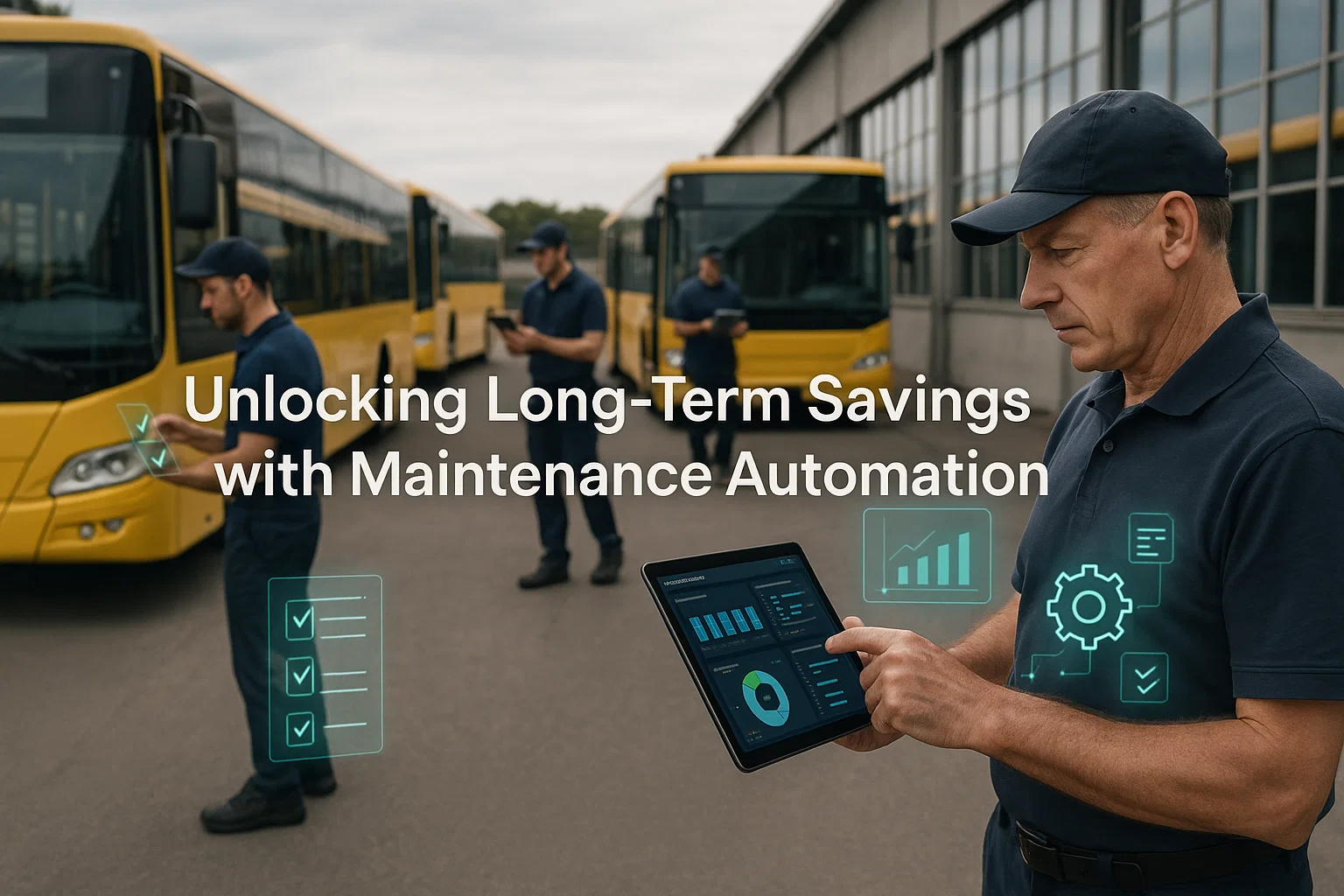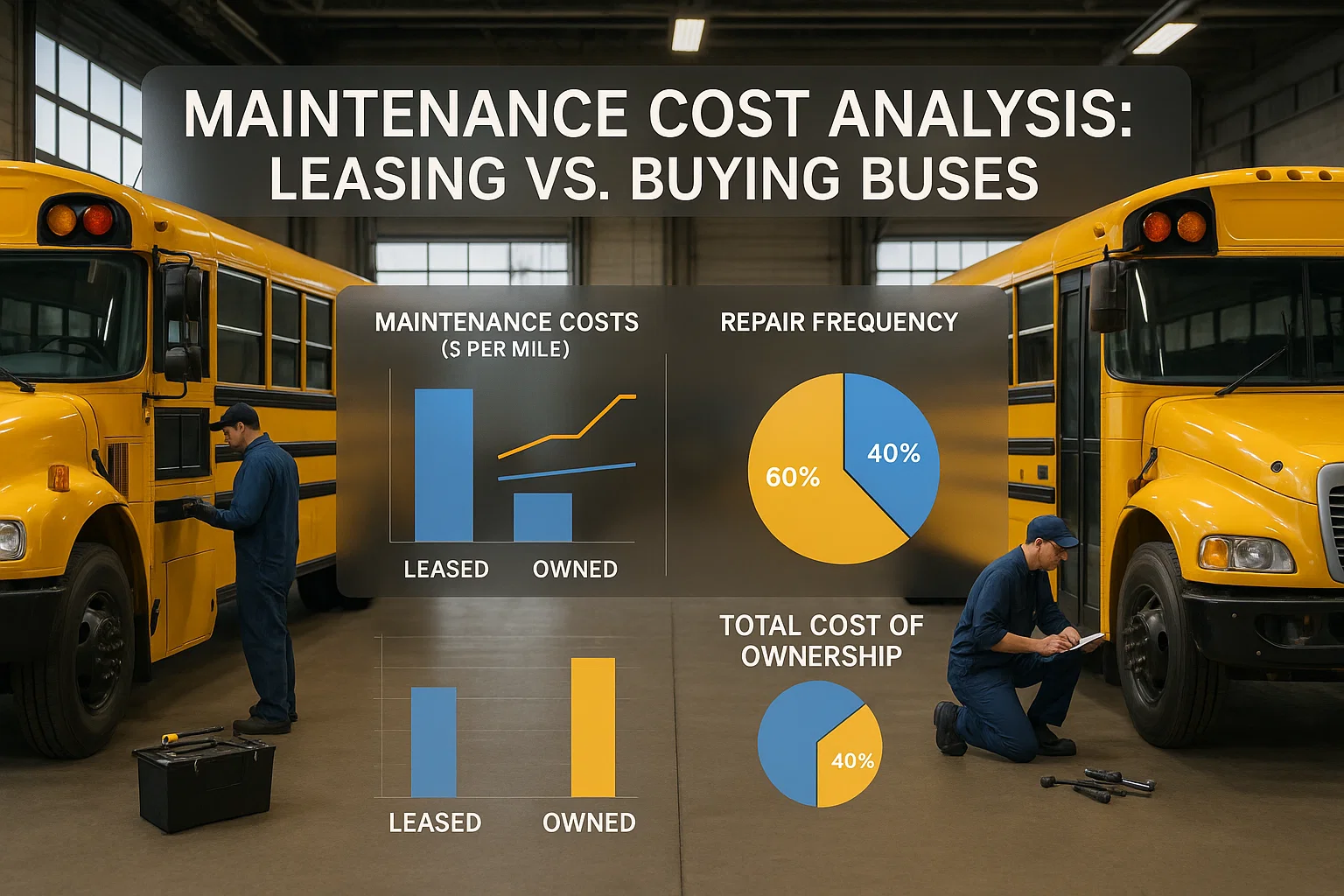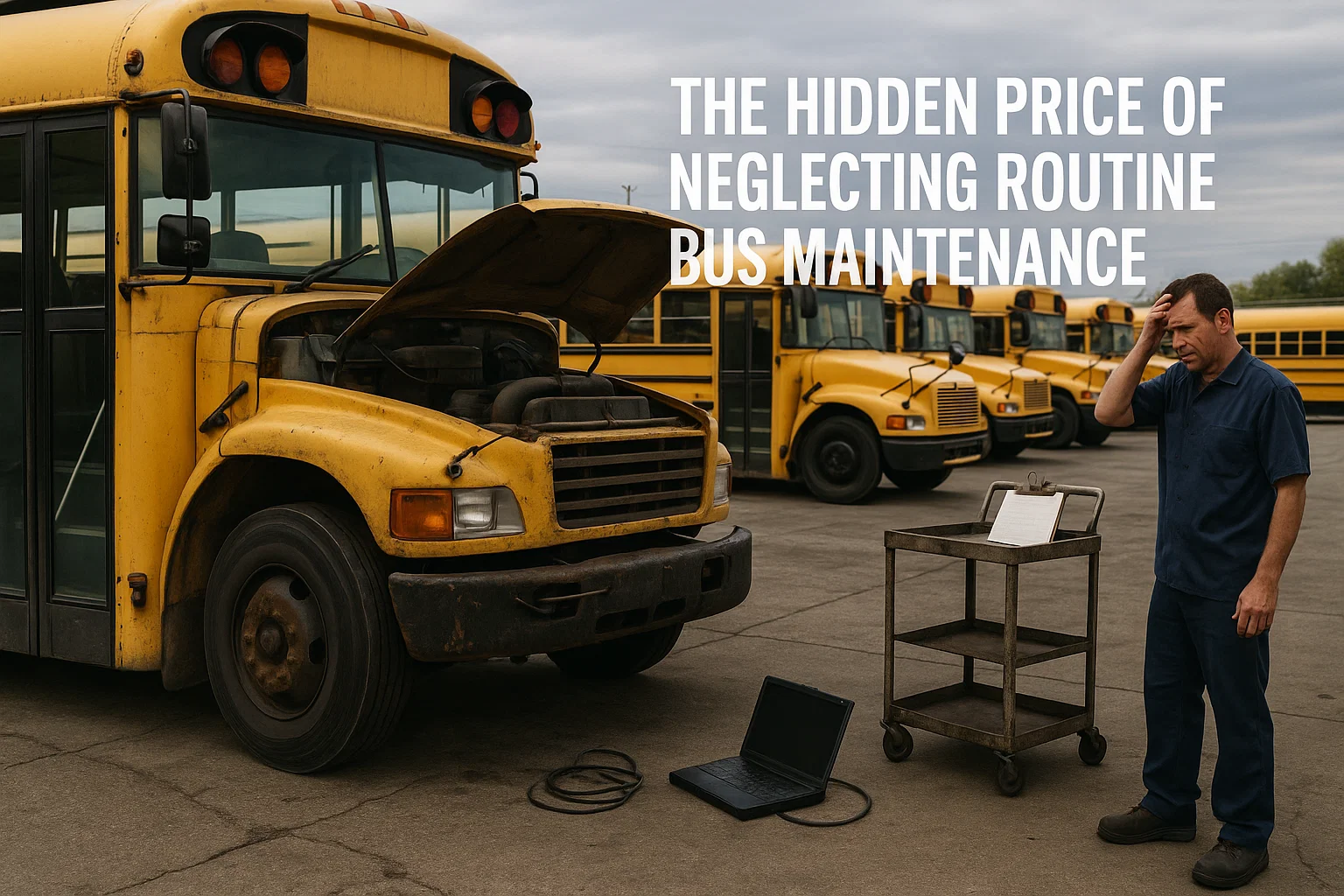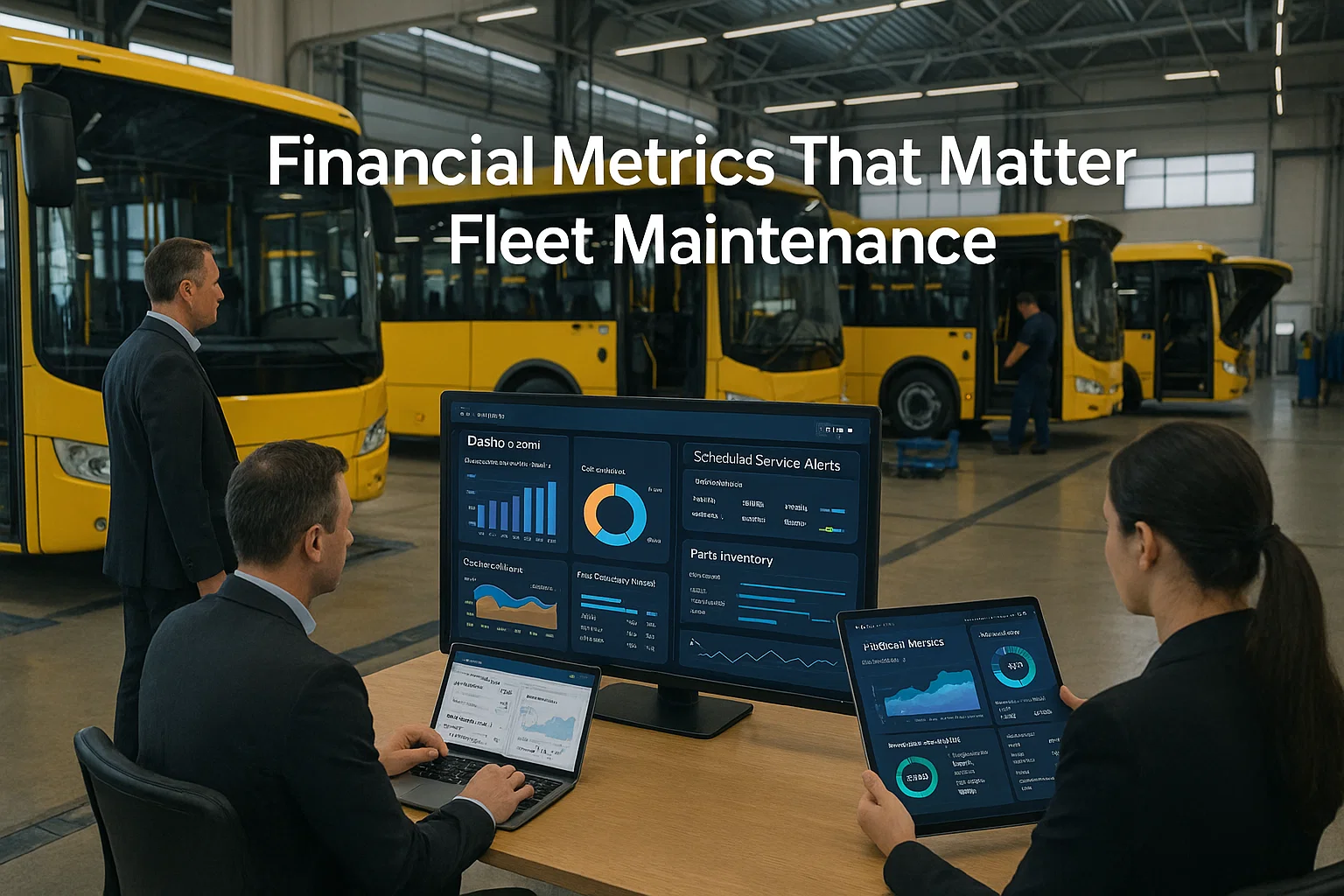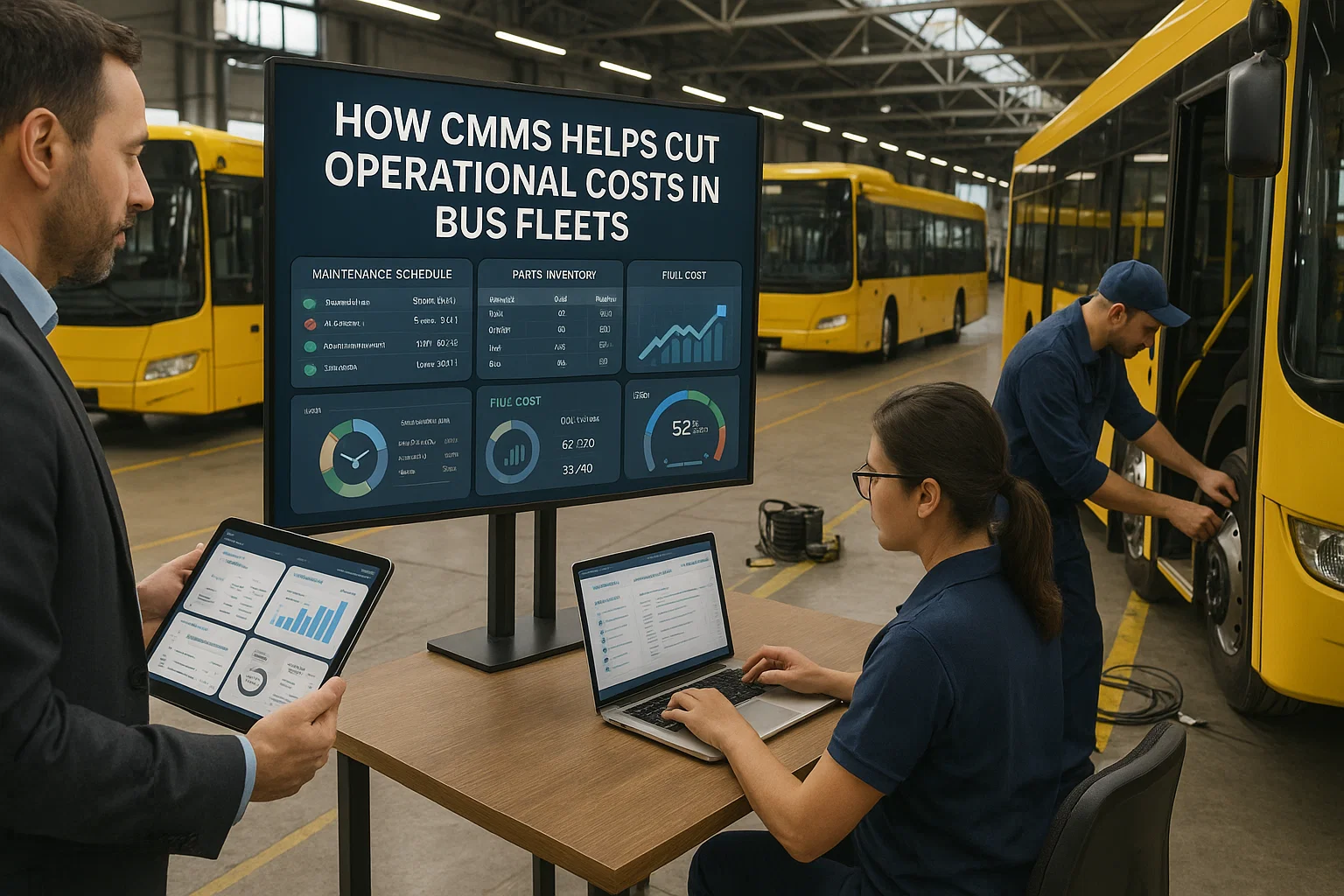Hybrid buses represent the perfect bridge between traditional diesel operations and fully electric futures, combining familiar internal combustion engines with electric propulsion for improved fuel efficiency and reduced emissions. However, this dual-powertrain complexity creates unique maintenance challenges requiring specialized expertise and management systems. Hybrid fleet management platforms specifically designed for diesel-electric buses transform these maintenance complexities into streamlined workflows that maximize efficiency while minimizing downtime.
Transit agencies operating hybrid fleets report 30-40% fuel savings compared to conventional diesel buses, yet maintenance requirements increase in complexity with two propulsion systems requiring attention. Managing both traditional mechanical components and sophisticated electrical systems demands comprehensive approaches that few maintenance teams initially possess. Dual-powertrain maintenance solutions help operators achieve 96% fleet availability, reduce maintenance costs by 35%, and extend component life by 40% through integrated management strategies.
The intricate interaction between diesel engines, electric motors, battery packs, and regenerative braking systems creates maintenance scenarios unknown in single-powertrain vehicles. From optimizing battery cycling to managing complex cooling requirements, schedule a demonstration to see how specialized maintenance systems ensure hybrid fleets deliver promised environmental and economic benefits while maintaining superior reliability.
Maximize Your Hybrid Fleet Performance
Discover proven strategies for managing complex hybrid bus maintenance effectively.
Getting StartedBook a Demo
Dual Powertrain Management Strategies
Hybrid buses seamlessly switch between diesel and electric power based on operational demands, requiring maintenance programs that address both systems equally. The interaction between powertrains creates unique wear patterns and failure modes that traditional maintenance approaches fail to address. Integrated powertrain management platforms coordinate maintenance across both systems, ensuring optimal performance regardless of operating mode.
Engine and Motor Coordination
Diesel engines in hybrid buses operate differently than in conventional vehicles, frequently starting and stopping based on battery charge and power demands. Predictive maintenance systems track engine operating hours versus calendar time, adjusting service intervals based on actual usage rather than mileage alone.
Electric motors provide initial acceleration and low-speed propulsion, experiencing different stress patterns than highway-focused diesel engines. The constant transition between power sources creates unique wear on coupling systems and transmission components. Advanced monitoring tracks power flow between systems, identifying inefficiencies that indicate developing problems before they cause failures.
System Integration Points
- Power Split Device: Monitor planetary gear sets that blend diesel and electric power
- Motor-Generator Units: Track efficiency of units that start engines and generate electricity
- Inverter Systems: Maintain cooling and monitor switching frequencies for optimal operation
- Control Modules: Update software managing power distribution between sources
- Coupling Mechanisms: Inspect clutches and transmissions handling dual inputs
Battery System Optimization
Hybrid bus batteries operate under different conditions than full electric vehicles, experiencing frequent charge-discharge cycles as they supplement diesel power. These cycling patterns require specialized management to prevent premature degradation while maintaining performance. Battery optimization platforms balance charging strategies with operational demands to maximize battery life.
Charge Cycle Management
Unlike electric buses that charge overnight, hybrid batteries cycle continuously during operation, charging through regenerative braking and engine generation while discharging for acceleration and electric-only operation. Modern monitoring systems track these micro-cycles, identifying patterns that accelerate degradation.
Optimal battery management maintains state of charge between 30-70% during normal operation, preventing deep discharges that stress cells while avoiding overcharging that reduces capacity. Temperature management proves critical as batteries generate heat during rapid cycling. Active cooling systems require maintenance to ensure batteries operate within optimal temperature ranges.
Battery Health Monitoring
Cell Balance Tracking
Monitor voltage differences between cells to prevent capacity mismatches
Thermal Management
Maintain cooling systems for optimal battery temperature control
Capacity Testing
Regular assessment of available energy storage versus original specifications
Regenerative Braking System Maintenance
Regenerative braking in hybrid buses recovers energy during deceleration, improving fuel efficiency by 20-30%. However, the complex interaction between regenerative and friction braking requires sophisticated maintenance to ensure safety and efficiency. Brake system management platforms optimize the balance between energy recovery and brake wear.
Brake Blending Calibration
Hybrid buses must seamlessly transition between regenerative and friction braking based on battery charge, vehicle speed, and braking demand. Advanced calibration systems ensure smooth transitions that maximize energy recovery without compromising safety or passenger comfort.
Regenerative braking effectiveness varies with battery state of charge, requiring dynamic adjustment of brake blending strategies. When batteries approach full charge, friction brakes must compensate for reduced regenerative capacity. Proper calibration prevents unexpected changes in brake feel that could startle drivers or cause safety issues.
Foundation Brake Considerations
- Reduced Wear Monitoring: Track actual brake usage versus mileage for accurate replacement timing
- Corrosion Prevention: Exercise friction brakes regularly to prevent seizure from disuse
- Brake Balance: Ensure even distribution between regenerative and friction systems
- ABS Integration: Verify anti-lock systems function properly with regenerative braking
- Emergency Override: Test friction brake priority in panic stop situations
Streamline Your Hybrid Fleet Operations
Implement advanced strategies for managing dual-powertrain maintenance complexity.
Getting StartedBook a Demo
Cooling System Complexity
Hybrid buses require multiple cooling circuits managing heat from diesel engines, electric motors, batteries, and power electronics. This complexity demands sophisticated maintenance approaches to prevent overheating that could damage expensive components. Thermal management platforms coordinate cooling system maintenance across all heat-generating components.
Multi-Circuit Cooling Management
Separate cooling loops for engines, motors, and batteries operate at different temperatures, requiring independent maintenance schedules. See how integrated monitoring tracks each circuit's performance, identifying degradation before system failures occur.
Engine cooling systems operate at traditional temperatures around 195°F, while electric motor cooling maintains lower temperatures near 140°F. Battery thermal management requires even more precise control, maintaining temperatures between 60-95°F for optimal performance and longevity. Each circuit requires specific coolant types and maintenance intervals.
Heat Exchanger Maintenance
Radiator Systems
Clean multiple radiators managing different temperature requirements
Coolant Quality
Monitor conductivity in electric system coolants to prevent short circuits
Pump Operations
Maintain separate pumps for each cooling circuit
Diagnostic System Integration
Hybrid buses generate diagnostic data from multiple control modules managing different systems, creating challenges for technicians accustomed to single-system diagnostics. Integrated diagnostic platforms consolidate information from engine control units, hybrid control processors, and battery management systems. Unified diagnostic platforms provide comprehensive system visibility through single interfaces.
Multi-System Fault Analysis
Fault codes from one system often impact others, requiring sophisticated analysis to identify root causes. Intelligent diagnostic systems correlate codes across modules, revealing relationships between seemingly unrelated faults.
A battery temperature sensor failure might trigger codes in the hybrid controller, engine module, and transmission computer as each system responds to invalid data. Traditional diagnostics would treat these as separate issues, leading to unnecessary parts replacement. Integrated analysis identifies the single sensor causing multiple symptoms, reducing diagnostic time by 60%.
Diagnostic Capabilities
- Cross-System Analysis: Correlate fault codes from multiple control modules
- Performance Trending: Track efficiency degradation across both powertrains
- Predictive Diagnostics: Identify developing issues before fault codes appear
- Remote Monitoring: Access diagnostic data without removing buses from service
- Historical Analysis: Review past faults to identify recurring problems
Fuel Efficiency Optimization
The primary benefit of hybrid buses lies in fuel savings, but achieving optimal efficiency requires careful maintenance of both mechanical and electrical systems. Degraded components reduce efficiency, eliminating the economic advantages of hybrid technology. Efficiency optimization platforms monitor fuel consumption patterns, identifying maintenance needs that restore peak performance.
Efficiency Loss Detection
Gradual efficiency degradation often goes unnoticed until fuel costs significantly increase. Book a demo to learn how predictive analytics identify efficiency losses before they impact operating budgets.
Dirty air filters, degraded batteries, and misaligned sensors can reduce fuel economy by 15-20%. Engine timing issues prevent optimal coordination with electric motors. Transmission problems increase parasitic losses. Each issue individually causes minor efficiency loss, but combined impacts prove substantial.
Performance Restoration Strategies
Engine Optimization
Maintain peak combustion efficiency through precise timing and fuel injection
Electric Efficiency
Ensure motors and inverters operate at maximum conversion efficiency
System Calibration
Optimize power management strategies for route characteristics
Optimize Your Hybrid Maintenance Program
Join leading transit agencies maximizing hybrid fleet efficiency and reliability.
Getting StartedBook a Demo
Technician Training and Certification
Hybrid bus maintenance requires technicians skilled in both traditional diesel mechanics and high-voltage electrical systems. This dual expertise demands comprehensive training programs covering safety procedures, diagnostic techniques, and component service. Training management platforms track certifications, schedule refresher courses, and ensure technician competency.
Skill Development Programs
Transitioning diesel technicians to hybrid maintenance requires structured training addressing knowledge gaps in electrical systems. Digital training systems provide interactive modules covering battery technology, motor operation, and power electronics.
Safety training proves paramount as technicians work with voltages exceeding 600V DC. Proper lockout/tagout procedures, personal protective equipment use, and emergency response protocols prevent accidents. Certification programs validate competency levels, ensuring only qualified personnel access high-voltage systems.
Certification Requirements
- High-Voltage Safety: OSHA-compliant training for working with electrical systems
- Hybrid Systems: Manufacturer-specific certification for powertrain components
- Diagnostic Proficiency: Advanced training in multi-system troubleshooting
- Battery Service: Specialized certification for battery maintenance and replacement
- Emergency Response: Training for electrical fires and thermal events
Predictive Maintenance Implementation
Hybrid buses generate extensive operational data from multiple systems, enabling sophisticated predictive maintenance strategies. Machine learning algorithms analyze patterns across diesel and electric components, predicting failures before they occur. Predictive analytics platforms reduce unplanned downtime by 70% through targeted preventive maintenance.
Data Integration Strategies
Combining data from engine controllers, hybrid systems, and battery management creates comprehensive vehicle health profiles. Modern analytics platforms correlate information across systems, revealing hidden relationships affecting reliability.
Engine oil analysis combined with battery performance data predicts hybrid system degradation. Regenerative braking effectiveness correlates with transmission wear patterns. These insights enable proactive maintenance that prevents cascading failures affecting multiple systems.
Predictive Capabilities
Component Lifecycle
Forecast replacement timing for batteries, motors, and engines
Efficiency Trending
Predict fuel economy degradation requiring maintenance intervention
Failure Prevention
Identify developing issues weeks before component failure
Parts Inventory Management
Hybrid fleets require diverse parts inventories spanning traditional mechanical components and specialized electrical parts. Managing this complexity while minimizing carrying costs demands sophisticated inventory systems. Inventory optimization platforms balance parts availability with storage costs through predictive stocking strategies.
Dual-System Parts Requirements
Stocking parts for both diesel and electric systems doubles inventory complexity compared to single-powertrain fleets. Smart inventory systems analyze consumption patterns, predicting parts needs based on maintenance schedules and failure rates.
High-value electrical components like inverters and battery modules require careful management to minimize carrying costs. Just-in-time ordering for expensive parts reduces inventory investment while ensuring availability. Common wear items need buffer stock to prevent service delays.
Inventory Optimization Strategies
- Predictive Stocking: Forecast parts needs based on maintenance schedules
- Vendor Partnerships: Establish quick-delivery agreements for expensive components
- Cross-Reference Systems: Identify parts common across diesel and hybrid platforms
- Obsolescence Management: Track parts for aging hybrid systems
- Core Management: Coordinate rebuilt component programs for cost savings
Frequently Asked Questions
How does Bus CMMS optimize hybrid fleet maintenance?
Hybrid fleet management systems revolutionize maintenance for dual-powertrain buses by providing integrated platforms that manage both diesel and electric components seamlessly. The system correlates data from multiple control modules, revealing how diesel engine performance impacts battery life and how electric system health affects overall fuel efficiency. Real-time monitoring tracks power flow between systems, identifying inefficiencies that indicate developing problems before they cause failures. Predictive maintenance algorithms analyze patterns unique to hybrid operations, such as frequent engine starts and battery cycling, adjusting service intervals based on actual usage rather than simple mileage. The platform manages the complexity of multiple cooling circuits, each operating at different temperatures, ensuring all systems receive appropriate maintenance. Diagnostic integration eliminates confusion from multiple fault codes by identifying root causes across interconnected systems. Battery optimization features balance charging strategies with operational demands, extending battery life by 30% while maintaining performance. Technician certification tracking ensures only qualified personnel work on high-voltage systems, preventing safety incidents. By implementing comprehensive hybrid management solutions, transit agencies achieve 96% fleet availability while reducing maintenance costs by 35% compared to managing systems separately.
What ROI can transit agencies expect from hybrid CMMS implementation?
Transit agencies implementing specialized hybrid maintenance platforms typically see return on investment within 12-18 months through multiple efficiency improvements and cost reductions. Fuel savings increase by 10-15% as optimized maintenance restores peak hybrid system efficiency that naturally degrades over time. Battery life extends 30-40% through intelligent charge management and thermal control, deferring replacement costs of $30,000-50,000 per bus. Predictive maintenance capabilities reduce unexpected breakdowns by 70%, preventing service disruptions and emergency repair costs. Diagnostic time decreases by 60% through integrated fault analysis that identifies root causes across multiple systems. Parts inventory costs reduce by 25% through predictive stocking based on actual consumption patterns rather than estimates. Labor efficiency improves 35% as technicians spend less time troubleshooting complex system interactions. Training costs decrease through digital certification tracking and targeted skill development programs. Federal grant compliance improves through automated documentation of emissions reductions and fuel savings. When calculating total benefits, hybrid fleet optimization systems deliver net savings of $25,000-40,000 per bus annually, making them essential investments for agencies operating dual-powertrain fleets.
Conclusion
Optimizing maintenance for hybrid bus fleets requires sophisticated strategies that address the unique challenges of dual-powertrain technology. Through comprehensive hybrid fleet management systems, transit agencies transform maintenance complexity into operational excellence that delivers both environmental and economic benefits.
The strategies outlined—dual powertrain management, battery optimization, regenerative braking maintenance, cooling system coordination, and predictive analytics—work synergistically to ensure hybrid fleets achieve their full potential. Agencies report remarkable results including 35% maintenance cost reduction, 96% fleet availability, and 40% extension in component life through integrated management approaches.
As transit agencies balance environmental goals with operational efficiency, hybrid buses provide the perfect bridge to sustainable transportation. The investment in specialized hybrid maintenance platforms ensures these complex vehicles deliver promised benefits while maintaining the reliability passengers expect, positioning agencies for success in an evolving transportation landscape.
Master Hybrid Fleet Maintenance Excellence
Equip your team with advanced tools for managing complex hybrid bus systems.


